How the New Queer Cinema Shaped the ‘90s Indie Film Boom
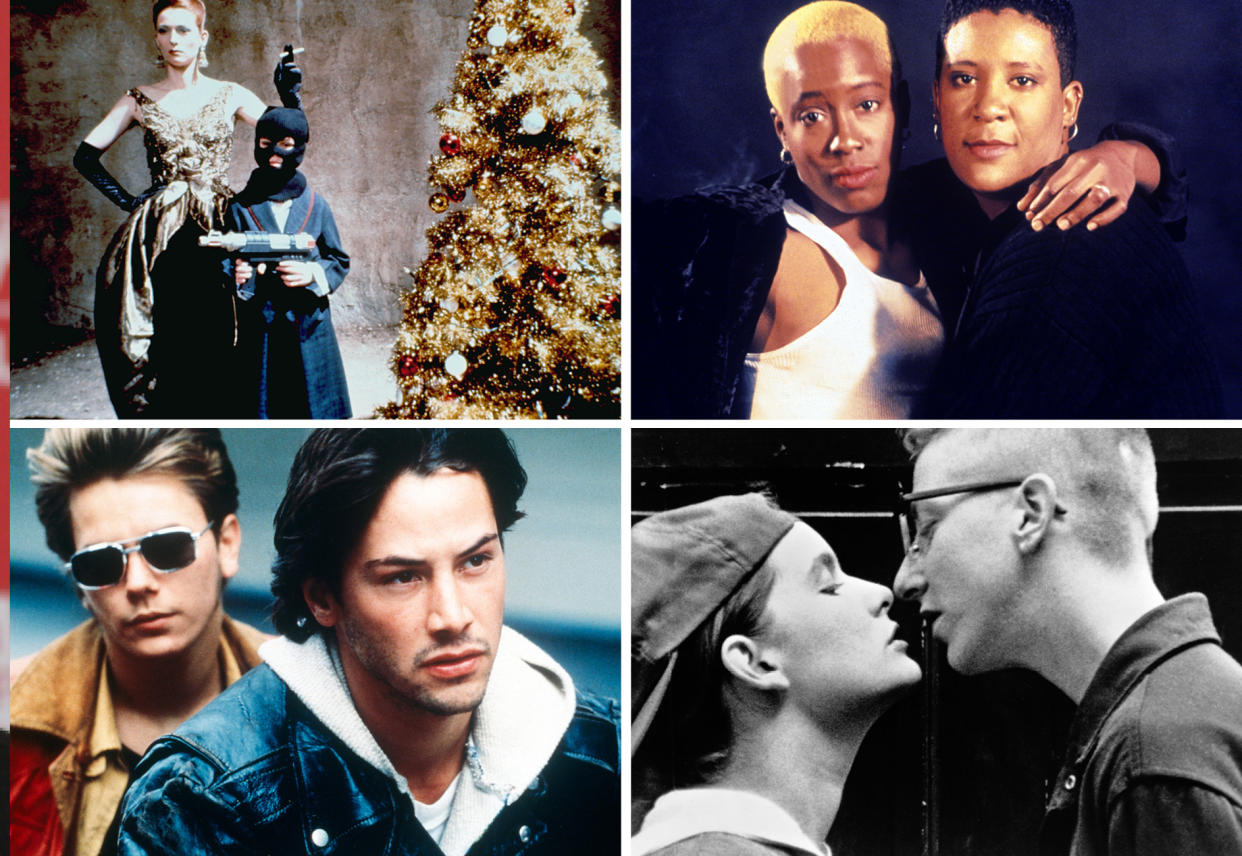
- Oops!Something went wrong.Please try again later.
- Oops!Something went wrong.Please try again later.
- Oops!Something went wrong.Please try again later.
- Oops!Something went wrong.Please try again later.

Coined by the film historian and critic B. Ruby Rich in 1992 to give voice to the explosion in queer film she was witnessing on the burgeoning film festival circuit, the New Queer Cinema’s influence on independent film cannot be overstated. The ‘80s saw films like Jim Jarmusch’s “Stranger Than Paradise” and Steven Soderbergh’s “Sex, Lies, and Videotape” explode the idea of what film could be, in turn inspiring a new generation of radical queer filmmakers to pick up the camera and crack the whole thing wide open.
More from IndieWire
As Hollywood churned out blockbusters like “Terminator 2” and “Jurassic Park,” anyone paying attention could see that the real fun was being had way below budget. Sundance was still a new little gathering in Park City, where someone fresh out of film school could show a film and meet likeminded artists. Throughout the decade, Sundance gradually established itself as the epicenter of the American film market, and suddenly indie movies had a real shot at playing in theaters worldwide.
Documenting Queer Life
Shot in the mid-to-late ‘80s, “Paris Is Burning” is one of the biggest titles that came to define the genre. Premiering in 1990 and hitting theaters in 1991, Jennie Livingston’s seminal documentary started the decade in queer film off with an explosive bang. The bold characters, fabulous fashion, and gravity-defying dances were unlike anything most moviegoers had ever seen. Though the flashiness got people in seats, Livingston foregrounds their subjects’ humanity, sharing the discrimination, stigmatization, and alienation that created a need for a ballroom community.
In turning the camera on the fabulous people society tried so hard to hide, the film also celebrated the beauty and bravery it takes to protect and uplift each other through music, dance, and self-expression.
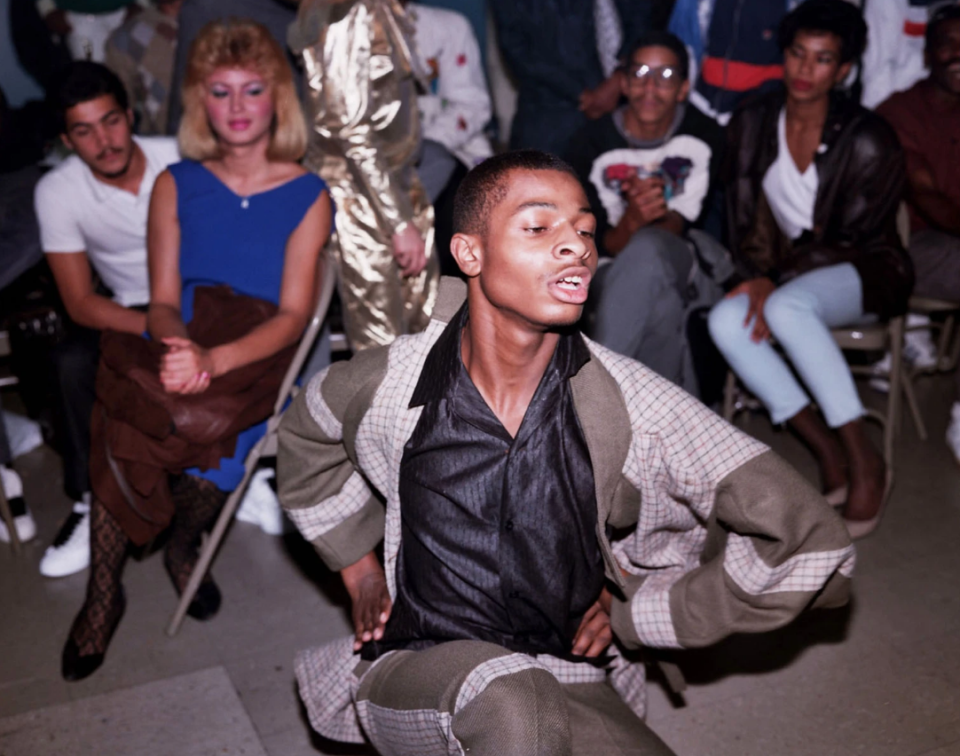
Everett Collection
Without being too didactic, “Paris Is Burning” laid bare the nascent concept of “intersectionality,” the overlapping effects of oppression based on race, class, and gender. These ideas were also introduced by the films of Marlon Riggs, whose evocative portraits of Black gay men living through the AIDS crisis are unparalleled in scope and artistry. While Riggs’ early work came out in the late ‘80s, both “Color Adjustment” (1992) and “Black Is… Black Ain’t” (1995) left an indelible mark on queer film and the portrayal of marginalized communities onscreen.
The Scrappy Lesbian Comedies, from “Go Fish” to “But I’m a Cheerleader”
As the first film to be sold to a distributor at Sundance in 1994, one could argue the indie film market was launched by a little lesbian rom-com called “Go Fish.” Directed by Rose Troche and written by Troche and Guinevere Turner, this scrappy black-and-white comedy sets its modern romance amongst a smart group of lesbian friends in Chicago. “Go Fish” cost $15,000 to make, sold to Samuel Goldwyn for $450,000, and went on to gross nearly $2.5 million.
It was like the world suddenly discovered lesbians existed in 1994. “Go Fish” has been celebrated for proving the marketability of lesbian films, but Troche has another view.
“I don’t think ‘Go Fish’ launched a thousand queer filmmakers so much as it launched a thousand indie filmmakers,” she said in 2016.
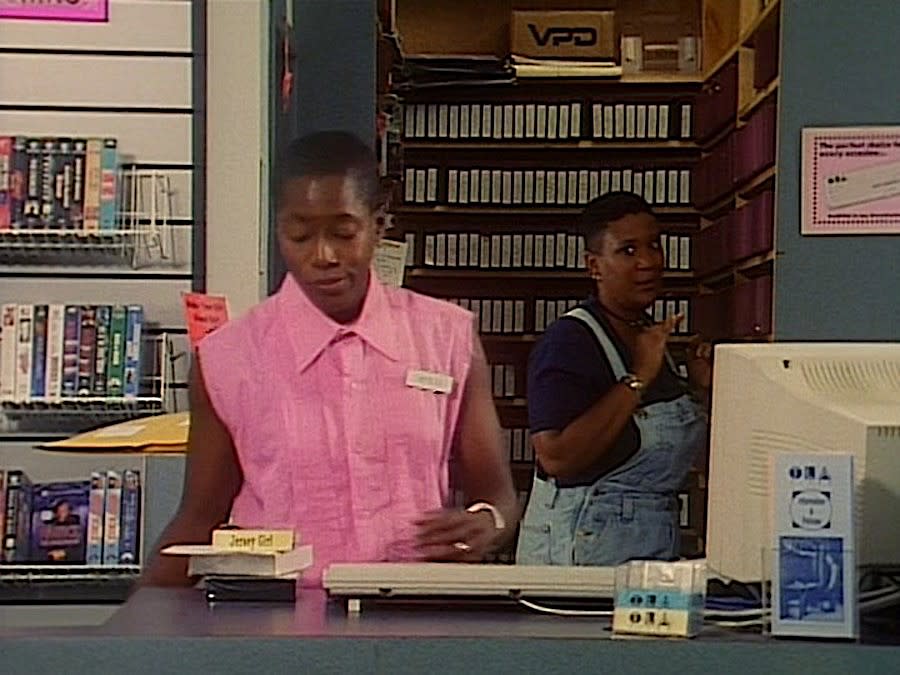
Seemingly of a pair, Cheryl Dunye’s “The Watermelon Woman” came along two years later in 1996, starring Turner as the love interest. If “Go Fish” made white lesbians cool, Dunye was here to remind everyone that Black lesbians had been around for just as long.
Set in Philadelphia, the film follows Dunye’s attempt to make a documentary about Fae Richards, a fictional Black actress from the 1930s. Struck by her beauty and yearning for a film history that reflects someone who looks like her, Cheryl embarks on a journey that — while fictional — tellingly yields more fruit than the real Dunye’s ever had. When the director’s archival search for Black women onscreen turned up nothing, Dunye invented her own. With Turner’s involvement as well as the photographer Zoe Leonard, “The Watermelon Woman” embodies the collaborative spirit of indie filmmaking at that time, especially amongst the smaller world of queer film.
Though filled with big ideas, these comedies made the most of a minimalist approach, relying on few characters and smart writing to tell engaging stories. Each one paved the way for something a bit more ambitious, and the decade in queer comedy went out with a bang with Jamie Babbit’s “But I’m a Cheerleader.” Set in the present day with a bold retro aesthetic, the film stars a young Natasha Lyonne as a cheerleader sent to a rehab for gay and lesbian teens.
The kind of film for which the terms “quirky” and “offbeat” were invented, this wild ensemble comedy included delightfully zany performances from Cathy Moriarty, Clea DuVall, RuPaul, Melanie Lynskey, Michelle Williams, and even a brief appearance from Julie Delpy. Indie film nerds, eat your hearts out.
The Shakespearean Punk Tragedies
While queer comedies made light of the loneliness and alienation that marked too much of queer life in the ‘90s, a sub-genre of gritty epic tragedies about rebellious teens made spoke to the disaffected youth of the ‘90s. The trend began with Gus Van Sant’s “My Own Private Idaho” (1991), which introduced teen heartthrobs Keanu Reeves and River Phoenix as young street hustlers running from broken homes. Loosely based on Shakespeare’s Henry IV trio, Reeves plays a rakish Prince Hal defying the influence of William Richert’s scheming Falstaff. Marrying the profound with the profane, he delivers stage-worthy soliloquys against a grimy backdrop of grunge era Portland.
Released the same year, Isaac Julien’s “Young Soul Rebels” explored the tensions between Britain’s skinhead, punk, and soulboy movements of the 1970s. Set against the backdrop of a murder investigation, the film’s two love stories transgress class and racial divides. Featuring music from Parliament, Roy Ayers, X-Ray Spex, Sylvester, and the O’Jays, the film uses an eclectic soundtrack to underscore the culture clash its story so brilliantly externalizes.
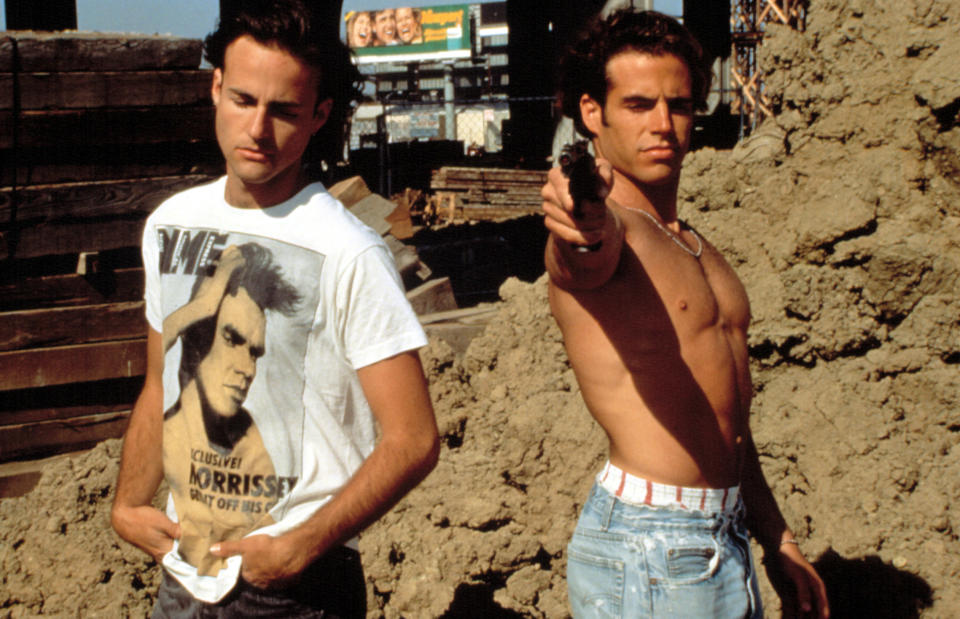
Strand Releasing/courtesy Everett Collection
More punk rock than epic tragedy, Gregg Araki’s “The Living End” (1992) announced him as the ultimate wild child of queer film, establishing his queer punk filmmaking style. (For more on Araki’s contributions to ‘90s cinema, visit his conversation with Andrew Ahn.) Ignited by an industrial post-punk soundtrack, “The Living End” follows two queer kids with HIV as they take off on the lam after murdering a homophobic cop.
Inspired by couple on-the-run movies like “Bonnie and Clyde” and screwball comedies like “Bringing Up Baby,” “The Living End” is a raucous road movie borne out of Araki’s experience living through the AIDS crisis as a young queer man.
Arriving late in the decade but hugely influential, Kimberly Peirce’s “Boys Don’t Cry” (1999) told the true story of the life and death of trans man Brandon Teena. As earlier queer tragedies had dramatized HIV, familial rejection, and queer youth homelessness, “Boys Don’t Cry” offered a haunting and humanizing portraits of the effects of violent transphobia. Featuring an Oscar-winning performance from Hilary Swank, the film marked the first time most Americans were forced to view trans people as worthy of dignity and respect.
The Long Lost Mid-Budget Studio Movie
Speaking of “Thelma and Louise” (which, let’s face it, was pretty queer), the ‘90s were also defined by a slow but sure trickle of LGBTQ characters and themes in mainstream hits. While it’s impossible to imagine a major studio backing a film like “My Own Private Idaho” even today, the success of the New Queer Cinema films led to a softening in the idea of seeing queerness onscreen. Though dramas like “The Crying Game” and “Basic Instinct” offered less than ideal representations of queer characters, more celebratory depictions abounded in mid-budget comedies, the kind franchise-obsessed studios simply don’t make anymore.
“Mrs. Doubtfire” (1993) saw Robin Williams in full drag, reminding Hollywood — in the tradition of Tony Curtis — that cross-dressing can be a major source for slapstick comedy. A native San Franciscan, Williams blessed the gay comedy fans again with “The Birdcage” (1996), which saw him actually playing gay opposite the powerhouse Nathan Lane in a Mike Nicols and Elaine May’s fabulous Americanized “La Cage Aux Folles.” The decade ended with the more down to earth “In & Out” (1997), which saw Kevin Kline play a teacher discovering his sexuality after a student assumes he’s gay. All three were huge financial successes that could easily be seen in any theater in the U.S.
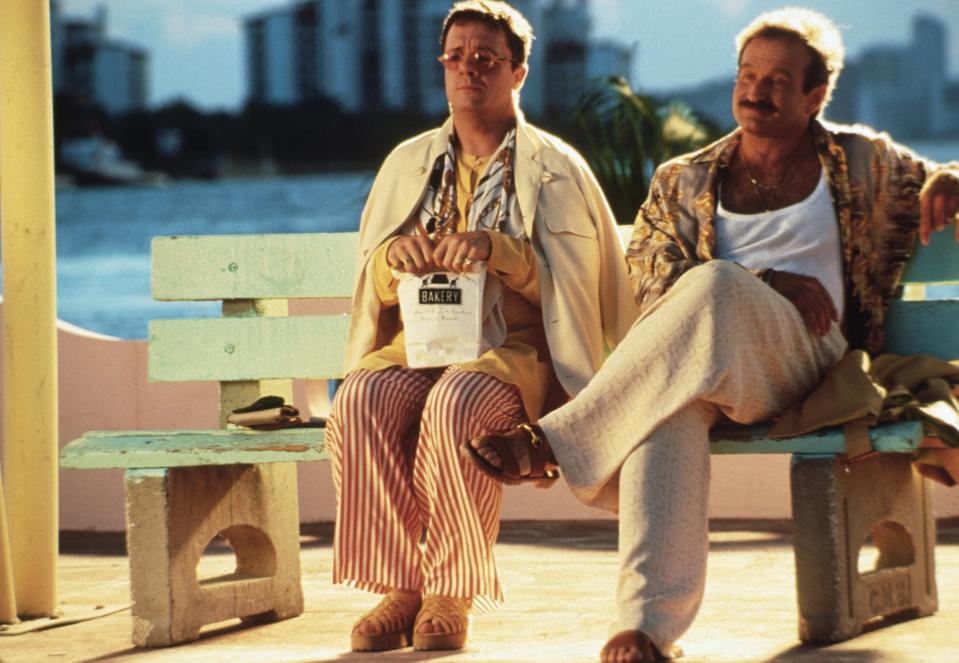
Lorey Sebastian/United Artists/Kobal/Shutterstock
A Sundance fixture throughout the ‘90s, Jonathan Demme’s “Philadelphia” owes a huge debt to the New Queer Cinema, which paved the way for his hugely impactful HIV/AIDS drama. Starring Tom Hanks as a gay man with HIV suing his former employer for wrongful termination, “Philadelphia” is widely considered the first mainstream gay movie, and the first to portray a gay character in a positive light. Hanks won the Oscar for Best Actor for his portrayal, launching the unfortunate trend of straight actors playing gay for awards.
There is not enough time to devote to all of the wonderful and impactful queer films of the ‘90s. Derek Jarman, Todd Haynes, Tom Kalin, Lisa Cholodenko, Ang Lee, Wong Kar Wai, Maria Maggenti, Lukas Moodysson, Deepa Mehta, Alain Berliner, the Wachowskis, and even David Cronenberg made immense contributions to the genre. All of their work deserves to be seen, celebrated, and preserved.
To trace the legacy of these films is to learn how the history of queer film is the history of film itself.
This article was published as part of IndieWire’s ’90s Week spectacular. Visit our ’90s Week page for more.
Best of IndieWire
Sign up for Indiewire's Newsletter. For the latest news, follow us on Facebook, Twitter, and Instagram.

